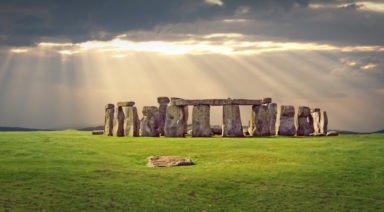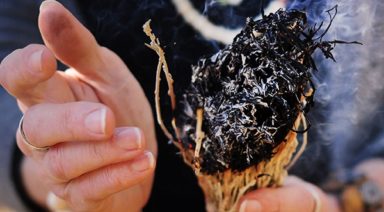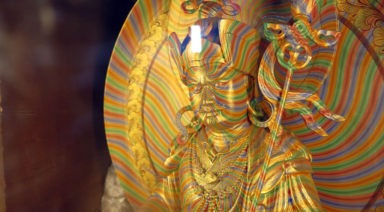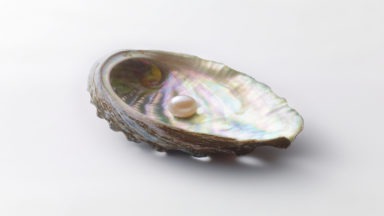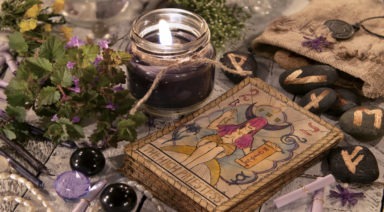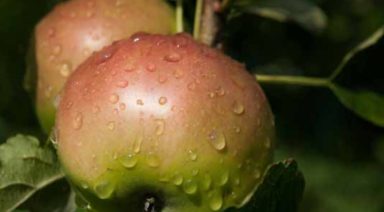Smudging Ceremony
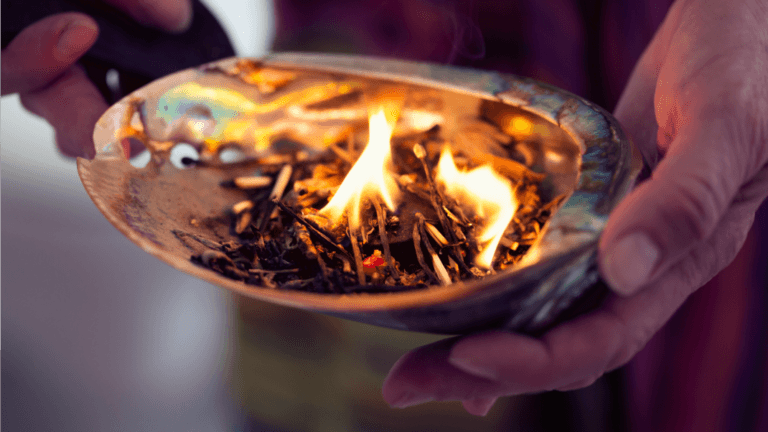
A smudging ceremony is the ritual of burning plant resins and herbs in a shell or a clay bowl while intentions and prayers are called forth. For centuries, Native American and Indigenous cultures have practiced smudging rituals to clear away negative energy, to invite in peace and harmony for individuals or environments. The smoke from the herbs and the plant resins are fanned using a feather or a hand and directed like a spiritual cleansing bath surrounding the person or the space.
The purpose of this cleansing ritual is to clear away anxieties, sadness, impurities, dark thoughts or unwanted energies that may have attached themselves to a space or an individual.
Smudging is most often performed before or as part of a ceremony to clear the environment and the people from certain thoughts or feelings that will not serve the highest good in themselves. For this reason, it is important to set a clear intention while smudging.
As the smudging ceremony is practiced, the smoke rises and so do the prayers to mother earth, father sky, to the sun and the moon, to the plants, the animals and the water. The burning of the sacred plants- sage, cedar, sweetgrass and palo santo- to name a few, support the connection to the sacred realms between the earth and spirit. Through this connect to spirit the smoke bath lifts negative feelings and energy and creates an opening for prayers and intentions to be heard, therefore bringing positive intention into practice.
What Plant Medicines are Used for Smudging?
Here are a few of the Plant Medicines used for Smudging and the symbolic meaning behind them:
Sage
Sage offers clarity, vision, strength and wisdom; it is known as a medicine for Women.
Sage is used traditionally in Native North American, First Nations and Indigenous cultures to represent the life force and maternal lineage of women. Sage can be gathered and bundled to dry in a stick or a smudge stick can be purchased already dried.
Cedar
Cedar is used to heighten positive energy, to uplift feelings and evoke positive emotions.
Cedar holds the medicine to purify and return balance.
Cedar can also be used as a healing tea as it is very high in Vitamin C. It can be bundled, dried, and burned for purification and to heighten the connection to the spiritual realms.
Sweetgrass
Sweetgrass is on the of the four medicine plants used by all Native Americans/First Nations, the others being sage, cedar and tobacco. Sweetgrass is braided, dried and then burned as a cleansing ritual. As the smoke from smudging rises it is believed that our prayers too will rise up to the world of spirit to be seen, heard, and to be remembered. Sweetgrass symbolizes kindness- as this plant only bends when walked upon and never breaks – may we too remember that if injustices are done upon us may we hold kindness in our hearts and not react with hostility.
Sweetgrass is known as the hair of Mother Earth.
Tobacco
Tobacco is a sacred medicine plant to all North American Indigenous Cultures. Tobacco is believed to be a gateway or a bridge between the Earth and Spirit realms. Historically if tobacco is offered and accepted, then there is a sacred promise sealed. It acts like a commitment made by people and supported by the Spirit World.
Tobacco can be used as a way to thank Mother Earth or the Creator for the abundance and beauty we receive every day.
For example if you saw a beautiful sunrise or a rainbow and you want to give thanks you could leave some Tobacco upon the Earth for this gift of beauty. Tobacco doesn’t need to be smoked.
Palo Santo
Palo Santo is a mystical tree that grows on the coast of South America and it means “Holy Wood” in Spanish.
Palo Santo looks like a small wooden stick and it’s scent is known to raise the vibration in preparation for meditation, creative endeavors and ceremony.
It’s known to bring a grounded and clear feeling when burned and is related to Frankincense, Myrrh and Copal. It is used the same way as Sage and is burned and fanned with a feather to clear the air and ask the spirits for permission to perform the ceremony.
Copal
Copal is a natural tree resin and comes from the Buresa tree family in Southern Mexico. Since ancient times, Copal incense has been considered sacred to the Mayan and Aztec people. Offerings were made to the deities and the gods atop the pyramids and the sacred burial grounds. Copal is considered a medicinal tree to the Mayas and is used to clear the body of diseases.
Using copal to smudge before meditation and ceremony can assist in strengthening peace of mind while removing energy blockages from the body.
Any of these plant medicines – along with any others that you feel called to burn – can be placed in a shell, a clay bowl or the open fire. Take the time to witness the smoke purifying and rising, allow the smell of the herbs and incense to bring you into a place of pure presence. As you call forth your prayers, visions, or intentions stay curious, open and full of heart as you engage in your smudging ceremony.
How to Smudge
Smudging can be done before any kind of ceremony, house cleansing, before yoga, meditation, in a group healing circle and in nature. Before beginning make sure you have these items in place. I suggest sitting in a quiet space for a few minutes to feel the earth below you, to soften into yourself, to take some full deep breaths, and to get clear on the intentions you are calling forth before your smudging session.
- You will need either a clay bowl or a large clam shell or abalone shell
- Herbs of your choice to burn (remove stems)
- Wooden Matches
- Large Feather or your hand is fine to wave smoke
- Open windows if you are inside
- Place the herbs or plant resin in the smudging vessel
- Light the herbs with a wooden match for 20 seconds are until it catches flame
- Wave the herbs with feather or hand so the flame goes out and the smoke swirls
- Smudge yourself first, waving the smoke over your face with eyes closed, over heart and limbs, over crown of the head and under the feet
- When you smudge others begins with the front body, then ask them to turn to do their back body, ask them to lift one foot then the other
- Have a clear intention to purify with your light and love anyone whom you are smudging. This is very important
- If you are smudging a home or a studio (wonderful for clearing away negative energy or when moving into a new space) ignite your herbs if they go out and begin the waving of smoke until every nook and cranny of the space has been smudged
- Once you are finished, take the ashes of the burned herbs and return it to the Earth
A Smudging Blessing for New Beginnings
Read over this a few times so you are familiar with the blessing and the body parts, then smudge yourself while speaking this prayer. Replace any words that you feel work better for you.
I cleanse my Eyes so they will see the Truth all around me, allow my eyes to see the beauty I receive from Mother Earth and the Love I create within my family and my communities.
I cleanse my Mouth for truthful speaking. In my speaking words may I elevate my community. May I speak prayers of healing to Mother Earth.
I cleanse my ears so that I may Listen fully to the wisdom passed down from my ancestors, the creator, the Earth and my Spirit Guides. May I be open to hear the good and allow any negativities to slide off me.
I cleanse my heart so that I may be filled with compassion and gratitude. May my heart be in truth and grow with purity, balance and joy.
May I walk in beauty
I cleanse my feet so they will guide us on this life’s journey as a light and truth seeker. May my feet stay grounded and remind me of how to walk in balance, love, joy and in harmony with my family, friends, earth, sky ,water, plant and animal worlds.”
May I walk in beauty.
Smudging is a very powerful practice and can work wonders in clearing away stagnant or unwanted energies in your home, in your heart or your mind. Being intentional, mindful, and calm as you are smudging creates a portal for you to go further into your spiritual work. The ritual of lighting a candle and then smudging yourself or your space allows you to gather presence, to let go of stress and to enter into your yoga practice, meditation, prayer or ceremony with intention. Let us rise up, clean our own energy fields and feed the greatness that lives inside us. Through this state of presence, may we also inspire our communities to live in their own greatness.
Ancient Traditions To Help You Celebrate Summer Solstice
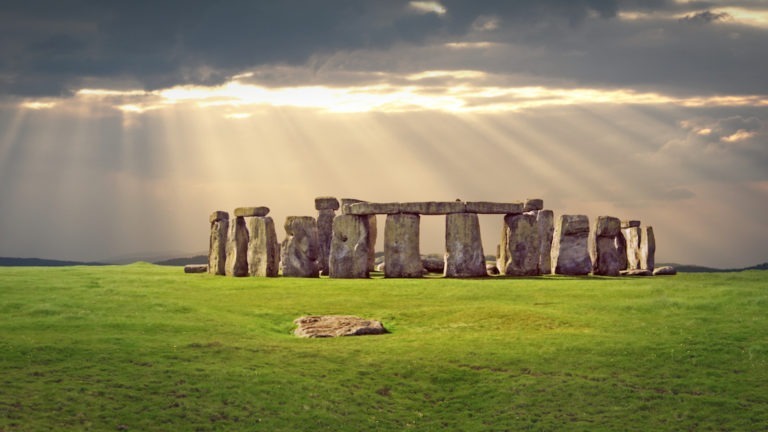
The summer solstice marks the longest day of the year, during which the axial tilt of the Earth puts the western hemisphere closest to the Sun. For time immemorial, it has been a day of celebration for many cultures across the world. But if you’re unsure of how to celebrate the summer solstice of 2019, here are some of the ancient rituals and celebrations practiced by our ancestors on the midsummer’s night.
Summer Solstice Meaning
The word solstice comes from the Latin words “sol,” meaning sun, and “stitium” or “sistere,” meaning still or stopped. In ancient times, our ancestors likely used this day as a marker to decide when to plant crops, noticing that the sun switched from a southward to northward trajectory in the sky.
But more importantly, the solstice was a time of celebration and a break from the norm. Many cultures believed that magic took place on the night of the summer solstice, with fairies showing themselves to humans, while evil spirits were dispelled from their lives.
Ancient Festivities on the Summer Solstice
In ancient Greece, the summer solstice marked the start of a new year and the month-long countdown to the Olympics. The Greeks also observed the festival of Kronia, during which they worshipped Cronus, the god of agriculture. At this time slaves were given equal rights to their owners, who allowed them to participate in games and festivities, sometimes even reversing roles and serving them – it was undoubtedly a welcomed holiday.
In ancient Egypt, the summer solstice represented the coming of the brightest star, Sirius. Not long after, the Nile would begin to flood its banks, marking a season of abundance from the land. The Egyptians believed Sirius was responsible for the floods and considered it the start of a new year.
The ancient Romans celebrated the festival of Vestalia, in honor of the goddess of the hearth. Married women brought offerings to the temple of Vesta, hoping the goddess would bestow blessings upon their families. Vesta was the protector of married women and virginity, and was exclusively a goddess for women.
In addition to the offerings made in Vesta’s temple, women would bake a sacred cake, which followed a strict recipe. Water from a sacred spring would be used, and prevented from coming into contact with the Earth, as it was carried in blessed jugs.



